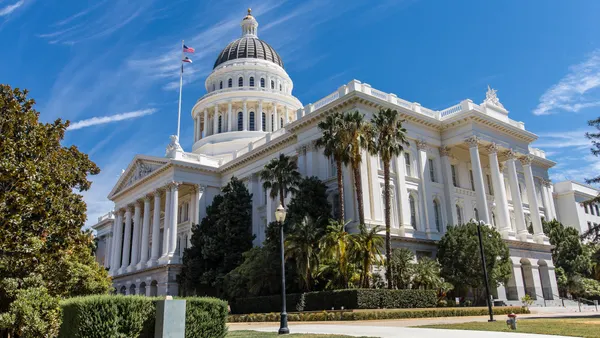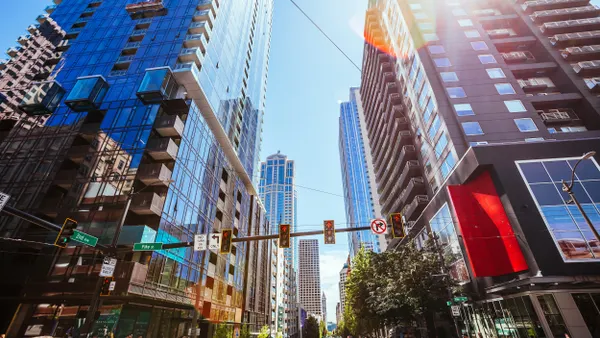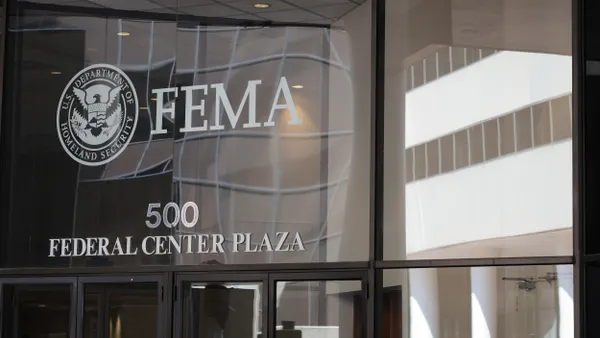Dive Brief:
- More than 141 million Americans, roughly 40% of the population, live in counties with unhealthy levels of ozone or particulate matter pollution, according to an annual report from the American Lung Association. That’s 7 million more than previous year’s findings.
- Los Angeles was once again the nation’s worst-ranked city for ozone pollution. Fellow California cities Visalia, Bakersfield, Fresno, Sacramento, San Diego and the San Jose-San Francisco region were also among the 10 worst for ozone pollution.
- For particulate pollution, or soot, Fresno, Bakersfield and Fairbanks, AK were worst for year-round pollution levels. Visalia, CA and Los Angeles rounded out the five worst cities for that pollutant.
Dive Insight:
The “State of the Air” report — which reflects air quality measurements from 2015-2017 — found that air pollution worsened in many cities compared to previous years’ findings, which is in part due to the impact of climate change. Warmer temperatures exacerbate ozone formation and wildfires, which are major contributors to soot pollution.
“There is no clearer sign that we are facing new challenges than air pollution levels that have broken records tracked for the past twenty years, and the fact that we had more days than ever before when monitored air quality reached hazardous levels for anyone to breathe,” American Lung Association president Harold Wimmer said in a statement. He also called the findings “eye-opening.”
Los Angeles has long been plagued by dirty air, and has been the worst city for ozone in 19 of the 20 years the American Lung Association has published its rankings. The city and state have long worked to correct poor air quality, especially by tackling transportation emissions. Los Angeles last year adopted a plan to explore incentivize electric vehicles in ride-sharing, implementing congestion pricing and adjusting parking requirements, and has been investing more in public transit. California has also adopted rules to adopt more electric vehicles (EVs) and infrastructure, including a requirement that transit agencies use electric buses by 2040.
Action to address air quality will likely come from the city or state level, as the Trump administration has largely weakened enforcement and has appointed scientific advisors that cast doubt on the link between air pollution and human health. That’s included a rollback of fuel economy standards meant to reduce transportation pollution, which has put the administration in a legal battle with California. As more cities and states adopt their own clean energy and climate rules, the air quality rankings serve as another reminder of the health costs of inaction.









